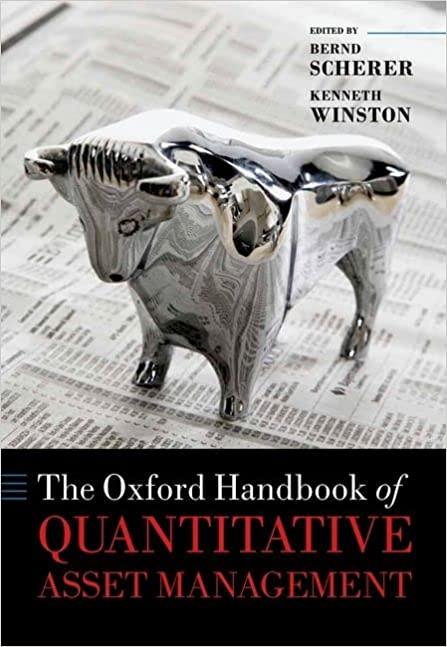Question
In general, the required rate of return is a function of (1) the time value of money, (2) the risk of an asset, and (3)
In general, the required rate of return is a function of (1) the time value of money, (2) the risk of an asset, and (3) the investor's attitude toward risk.
Select one:
True
False
Proper diversification generally results in the elimination of risk.
Select one:
True
False
Subordinated debentures are more risky than unsubordinated debentures because the claims of subordinated debenture holders are less likely to be honored in the event of liquidation.
Select one:
True
False
The expected rate of return from an investment is equal to the expected cash flows divided by the initial investment.
Select one:
True
False
The most relevant form of growth for valuing a firm's common stock is internal growth.
Select one:
True
False
The par value of a corporate bond indicates the payment that the issuer promises to make to the bondholder at maturity.
Select one:
True
False
The required rate of return for an asset is equal to the risk-free rate plus a risk premium.
Select one:
True
False
The yield to maturity is the discount rate that equates the present value of the interest and principal payments with the current market price of the bond.
Select one:
True
False
Total risk equals systematic risk plus unsystematic risk.
Select one:
True
False
Variation in the rate of return of an investment is a measure of the riskiness of that investment.
Select one:
True
False
Step by Step Solution
There are 3 Steps involved in it
Step: 1

Get Instant Access to Expert-Tailored Solutions
See step-by-step solutions with expert insights and AI powered tools for academic success
Step: 2

Step: 3

Ace Your Homework with AI
Get the answers you need in no time with our AI-driven, step-by-step assistance
Get Started


